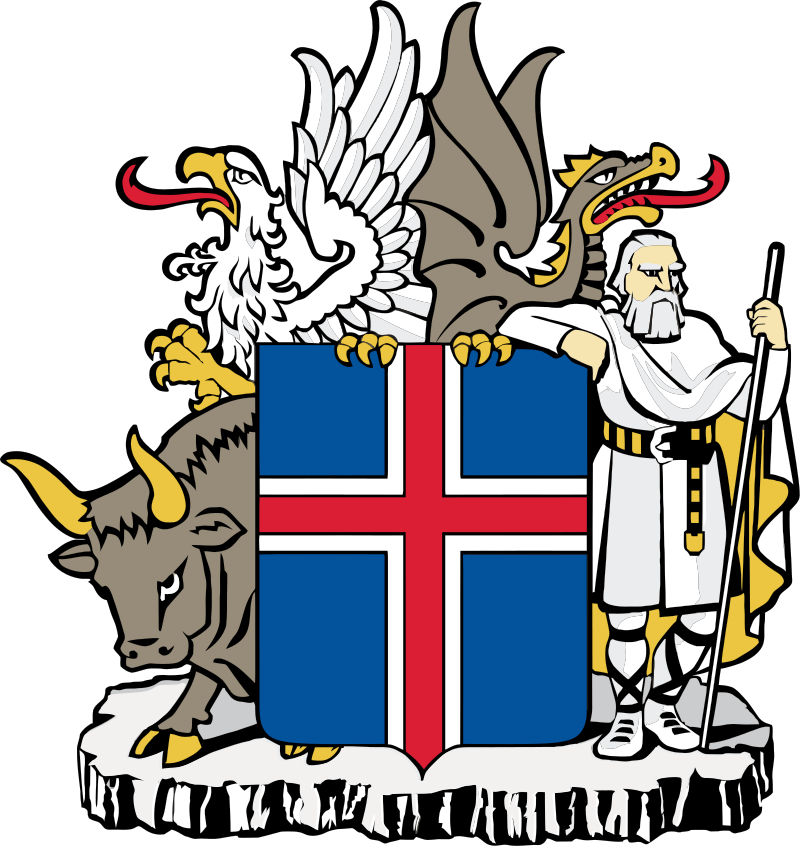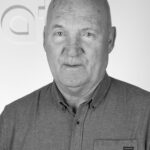A collection of 376 golden redfish (Sebastes marinus) from several fishing grounds in the North Atlantic in late 2001 was genotyped at nine microsatellite loci to provide preliminary information on the possible genetic structure in this species. Landscape genetic analysis revealed the presence of two distinct genetic pools within the North Atlantic, suggesting that S. marinus might be structured within the North Atlantic and should be the subject of more investigation.
Höfundur: admin
Background
The bacteriology during storage of the North-Atlantic cod has been investigated for the past decades using conventional cultivation strategies which have generated large amount of information. This paper presents a study where both conventional cultivation and cultivation independent approaches were used to investigate the bacterial succession during storage of cod loins at chilled and superchilled temperatures.
Results
Unbrined (0.4% NaCl) and brined (2.5% NaCl) cod loins were stored at chilled (0°C) and superchilled (-2 and -3.6°C) temperatures in air or modified atmosphere (MA, % CO2/O2/N2: 49.0 ± 0.6/7.4 ± 0.2/43.7 ± 0.4). Discrepancy was observed between cultivation enumeration and culture independent methods where the former showed a general dominance of Pseudomonas spp. (up to 59%) while the latter showed a dominance of Photobacterium phosphoreum (up to 100%).
Gas chromatography-mass spectrophotometry (GC-MC) showed that trimethylamine was the most abundant volatile in mid- and late storage periods. Terminal restriction polymorphism (t-RFLP) analysis showed that the relative abundance of P. phosphoreum increased with storage time.
Conclusion
The present study shows the bacteriological developments on lightly salted or non-salted cod loins during storage at superchilled temperatures. It furthermore confirms the importance of P. phosphoreum as a spoilage organism during storage of cod loins at low temperatures using molecular techniques. The methods used compensate each other, giving more detailed data on bacterial population developments during spoilage.
Atlantic herring (Clupea harengus) is an important commercial fish and shows to be more and more demanded for human consumption. Therefore, it is very important to find good methods for monitoring the freshness of the fish in order to keep it in the best quality for human consumption. In this study, the fish was stored in ice up to 2 weeks. Quality changes during storage were assessed by the Quality Index Method (QIM), quantitative descriptive analysis (QDA) and Torry scheme, by texture measurements: puncture tests and Texture Profile Analysis (TPA) tests on texture analyzer TA.XT2i, and by electronic nose (e-nose) measurements using FreshSense instrument. Storage time of herring in ice could be estimated by QIM with ± 2 days using 5 herring per lot. No correlation between instrumental texture parameters and storage time or between sensory and instrumental texture variables was found. E-nose measurements could be use to detect the onset of spoilage.
In 2006, we sampled the anoxic bottom waters of a volcanic lake beneath the Vatnajökull ice cap (Iceland). The sample contained 5 × 105 cells per ml, and whole-cell fluorescent in situ hybridization (FISH) and PCR with domain-specific probes showed these to be essentially all bacteria, with no detectable archaea. Pyrosequencing of the V6 hypervariable region of the 16S ribosomal RNA gene, Sanger sequencing of a clone library and FISH-based enumeration of four major phylotypes revealed that the assemblage was dominated by a few groups of putative chemotrophic bacteria whose closest cultivated relatives use sulfide, sulfur or hydrogen as electron donors, and oxygen, sulfate or CO2 as electron acceptors. Hundreds of other phylotypes are present at lower abundance in our V6 tag libraries and a rarefaction analysis indicates that sampling did not reach saturation, but FISH data limit the remaining biome to <10–20% of all cells. The composition of this oligarchy can be understood in the context of the chemical disequilibrium created by the mixing of sulfidic lake water and oxygenated glacial meltwater.

Opni háskólinn í HR hefur gert samstarfssamning við Matís og Reykjavíkur Akademíuna um þróun námskeiða og námslína auk kennslu, til að efla menntun í íslensku atvinnulífi.
Framsækin þjálfun og menntun stjórnenda, sérfræðinga og starfsfólks fyrirtækja gerir þeim kleift að skara fram úr í samkeppni og vera skapandi á tímum breytinga.

Skrifað var undir samstarfssamninga Opna háskólans, Reykjavíkur Akademíunnar og Matís kl. 12:30 í dag í Háskólanum í Reykjavík.
„Opni háskólinn leggur metnað sinn í að bjóða íslensku atvinnulífi aðgang að öflugu fagfólki og fagnar því að geta bætt fagsviðum við núverandi framboð Opna háskólans með samstarfssamningum við Matís og Reykjavíkur Akademíuna,“ segir Guðrún Högnadóttur, framkvæmdastjóri Opna háskólans um samstarfið.
„Í starfi Reykjavíkur Akademíunnar er mikilvægt að finna leiðir til að miðla þekkingu þeirra fræðimanna sem þar starfa og hagnýta hana með fjölbreyttum hætti. Í þeirri kreppu sem nú herðir að samfélaginu fer víða fram endurskoðun á grundvallarhugmyndum atvinnulífs og samfélags. Með samstarfi við Opna háskólann tekur Reykjavíkur Akademían í fyrsta sinn þátt í fræðslu fyrir atvinnulífið og ekki þarf að efast um að þar munu gagnkvæm kynni auðga alla sem þátt taka,“ segir Viðar Hreinsson, framkvæmdastjóri Reykjavíkur Akademíunar.
Sjöfn Sigurgísladóttir, forstjóri Matís, leggur áherslu á að samstarfssamningur þessi falli mjög vel að starfsemi Matís enda er eitt markmiða Matís að koma að öflugri kennslu og endurmenntun, m.a. í gegnum samstarf við háskóla á Íslandi sem og aðrar menntastofnanir. „Á þann hátt er búin til öflug tenging á milli vísindastarfs og rannsókna annars vegar og atvinnulífs hins vegar.“
Með samstarfinu vill Opni háskólinn auðga íslenskt samfélag með miðlun og virkjun þekkingar utan hefðbundinna námslína á háskólastigi. Með markvissri þjálfun og menntun starfsmanna geta íslensk fyrirtæki mætt breyttu viðskiptaumhverfi með kraftmeiri hætti en áður.
Nánari upplýsingar veitir Halldóra Guðrún Hinriksdóttir, forstöðumaður við Opna háskólann, í síma 864 0073.
Bættir vinnsluferlar loðnuhrogna / Improved processing of capelin roes
Vinnsla loðnuhrogna er að mestu byggð á rannsóknum og þróun sem átti sér stað á árunum 1972 til 1982. Veikleiki vinnsluferilsins hefur legið í þurrkun á hrognunum, þar sem hrogn eru látin standa í kerum í allt að 20 klukkustundir þar sem umframvatn er látið leka af þeim. Þurrkaðferðin rífur samfellu vinnslunnar, er kostnaðarsöm og eykur hættu á örveruvexti í afurð. Í skýrslunni er fjallað um áhrif vinnsluþátta á efna‐ og eðlisfræðilega eiginleika loðnuhrogna, auk þess sem skýrt er frá niðurstöðum tilrauna með samfellda þurrkun við vinnslu loðnuhrogna.
Current processing technique of Capelin roes is based on research and development carried out in 1972 to 1982. The weakness of the current process is the drying procedure where the roes are allowed to stand for up to 20 hours while excess water drains off to desirable level. This drying process disturbs the continuity of the process, is costly and increases the risk of bacteria growth. This report discusses the influence of various processing steps on the physical and chemical composition of the Capelin roes and results from experiments with continuous drying procedures in the processing of Capelin roes.
Skýrsla lokuð til 01.07.2011
Skoða skýrslu
Vinnsluferill línuveiðiskipa / Processing in line boats
Verkefni þetta er samstarfsverkefni eftirtalda fyrirtækja; Matís, Brim, Samherji, Vísir og 3X Technology. Markmið verkefnisins er að bæta vinnsluferla línuveiðiskipa með það fyrir augum að lækka kostnað við vinnsluna, auka vinnuhagræði og gæði afurða. Verkefnið inniheldur afrakstur úr sjóferð með ísfisktogaranum Stefni ÍS, þar sem markmiðið var að framkvæma mismunandi kæli og blóðgunartilraunir á þorski og komast þannig að því hver er besta vinnsluaðferðin/vinnslumeðhöndlunin með tillit til gæði afurðarinnar. Vinnsludekkið á línuskipum verður öðruvísi útfært en sömu einingarnar eru notaðar til að hámarka gæði aflans. Teknir voru nokkrir hópar sem fengu mismunandi vinnslu-meðhöndlun um borð. Hóparnir fóru síðan í vinnslu Hraðfrystihússins Gunnvarar þar sem þeir gengu undir skynmatspróf í lit og losi flakanna. Helstu niðurstöður verkefnisins leiddu í ljós að blæðing í sjó, helst með miklum vatnsskiptum, áður en farið er í kælingu, gefur betri litar – holdgæði á flakinu. Ekki reyndist marktækum munur milli hópana með tillit til loss, þar sem þeir voru allir með svipaðar niðurstöður.
This project is a collaboration work between; Matis, Brim, Samherji, Vísir and 3X Technology. The object of this project is to improve the process in line boats, by reducing production costs, improve work conditions and product quality. This project includes payoff from voyage with the ice-fresh trawler Stefnir ÍS, where the objective was to carry out difference bleeding and cooling methods on cod and find out which methods is efficient regards to the quality of the product. The processing deck in line boats will be implement difference, but same unitary will be used to increase the quality of the catch. The primary conclusion from the research on board Stefnir, is that bleeding in sea before cooling the fish, gives better results regard to the color of the fillet. The research also shows that there was not a significant difference between groups regards to results in looseness of the fillet.
Skoða skýrslu
Gæðaprótein úr fiski / Pure muscle proteins from fish
Miklar rannsóknir voru framkvæmdar á eðliseiginleikum vöðvapróteina úr fiski, einkum þorski. Verkefnið Hrein vöðvaprótein úr fiski reyndist önnur megin stoð undir starfsemi Iceprotein ehf. á mótunarárum fyrirtækisins. Í skýrslunni er gerð grein fyrir helstu niðurstöðum í framleiðsluferli hreinsaðra vöðvapróteina úr afskurði og kolmunna til nota í flök og tilbúnar afurðir og þeirrar þróunar sem átti sér stað hjá Iceprotein ehf. við uppskölun. Nærri lætur að fyrirtækið Iceprotein sé afsprengi þeirrar vinnu sem lögð var í verkefnið. Framleiddar voru fiskibollur sem síðar voru étnar og metnar og komu að ýmsu leiti vel út, fiskibollur með einangruðum próteinum auk fiskhakks rýrnuðu minna við eldun en fiskibollur sem ekki innihéldu einangruð prótein.
Great effort was used in viscoelastic measurements of cod muscle proteins. The project Pure muscle protein from fish proved to be one of the main pillars in the operations of Iceprotein ehf. in the offset of the company. In this report main results of the scale-up process at Iceprotein are followed through. The company Iceprotein basically spun off from the work done in this project. Fish balls from fish mince and fish protein isolates were prepared cooked, consumed and analyzed, fish balls containing FPI showed less weight loss in cooking than fish balls that did not contain FPI.
Skoða skýrslu

Matís hefur á undanförnum misserum staðið fyrir tilraunum með dagmerki um borð í fiskiskipum til að auka rekjanleika og upplýsingastreymi innan virðiskeðju sjávarafurða.
Nokkrar tegundir merkja hafa verið reynd, ásamt því sem magn þeirra upplýsinga sem fram koma á merkjunum og nýting þeirra eftir að aflinn kemur í land hafa verið könnuð. Vaxandi áhugi er á meðal útgerða á að nýta sér gögn sem þessi, enda eru allir aðilar í virðiskeðjunni að verða mun meðvitaðri en áður um þau verðmæti sem felast í upplýsingum og rekjanleika.
Nánari upplýsingar veitir Jónas R. Viðarsson hjá Matís, jonas.r.vidarsson@matis.is.

Þann 7. desember 2007 skipaði sjávarútvegsráðherra nefnd til að kanna stöðu og möguleika kræklingaræktar á Íslandi. Í skipunarbréfi til nefndarinnar kom eftirfarandi fram:
Þann 7. desember 2007 skipaði sjávarútvegsráðherra nefnd til að kanna stöðu og möguleika kræklingaræktar á Íslandi. Í skipunarbréfi til nefndarinnar kom eftirfarandi fram:
„Sjávarútvegsráðherra hefur ákveðið að skipa nefnd til að kanna stöðu og möguleika til kræklingaræktar á Íslandi með tilliti til bæði líffræðilegra og rekstrarlegra forsendna greinarinnar og umhverfisþátta. Nefndinni er ætlað að skila greinargerð til ráðherra og koma jafnframt með tillögur að þeim aðgerðum sem hægt væri að grípa til hjá hinu opinbera til að treysta almennar vaxtarforsendur greinarinnar“.
Nefndina skipuðu: Haukur Oddsson verkfræðingur, framkvæmdastjóri Borgunar hf. (formaður), Ásta Ásmundsdóttir verkefnisstjóri hjá Matís ohf., Guðrún Þórarinsdóttir sérfræðingur hjá Hafrannsóknastofnuninni, Jón Páll Baldvinsson frá Skelrækt – samtökum kræklingaræktenda og Kristinn Hugason deildarstjóri, sjávarútvegs- og landbúnaðarráðuneytinu.
Skýrsla þessi er nú fáanlegu á ensku og hægt er að sækja eintak hér.



